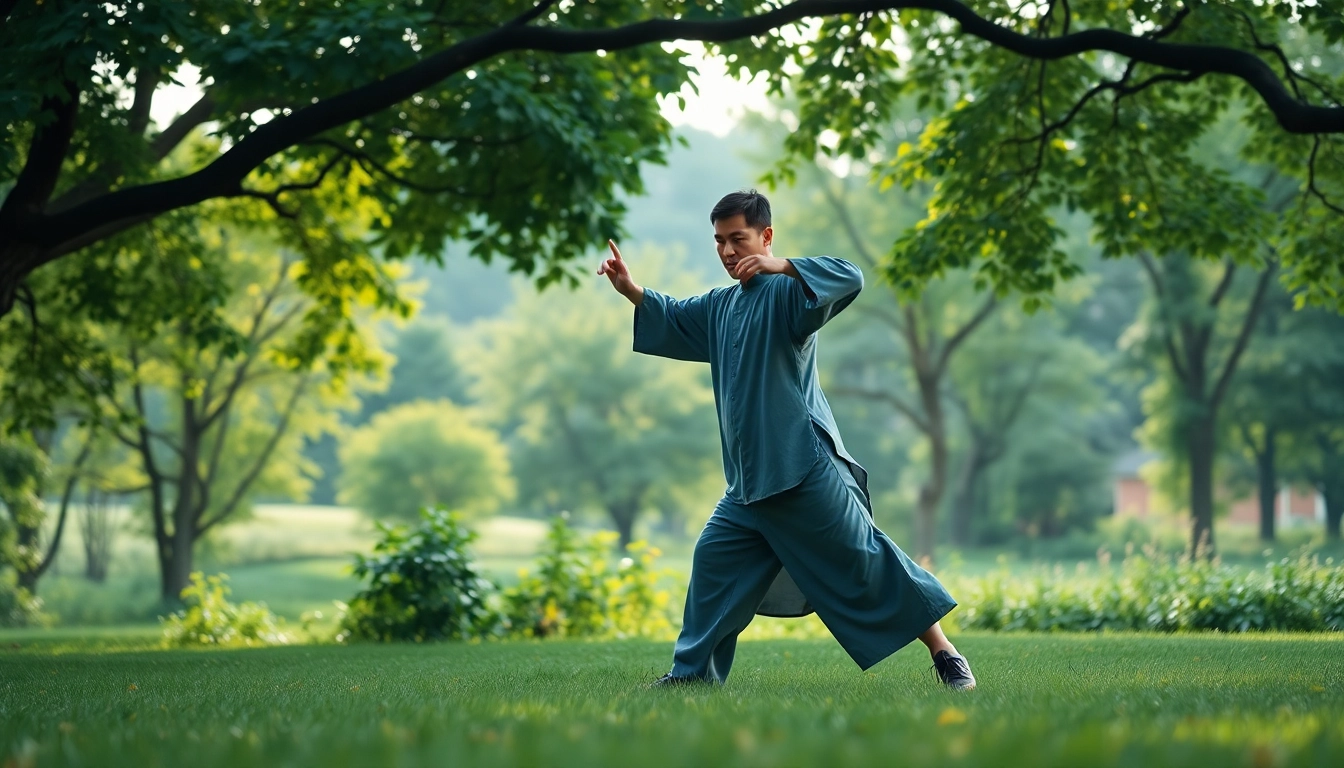Introduction to Tai Chi
What is Tai Chi?
Tai Chi, often referred to as “moving meditation,” is an ancient Chinese martial art that emphasizes balanced and graceful movements to improve both physical and mental well-being. Traditionally linked to various combat techniques, Tai Chi has evolved into a form of exercise that promotes relaxation, stress reduction, and overall health. Though often practiced in parks and group settings, Tai Chi can be effectively learned and mastered in the comfort of your own home. Emphasizing a fluid style of motion, Tai Chi integrates principles of mindfulness, breath regulation, and physical alignment to provide a holistic approach to wellness.
Benefits of Learning Tai Chi at Home
Learning Tai Chi at home presents various advantages that make it an appealing choice for individuals seeking personal growth and well-being. Some of the most notable benefits include:
- Convenience: With a flexible schedule, you can practice Tai Chi whenever it suits you, eliminating the need to coordinate with classes or commutes.
- Personalized Learning: Practicing at home allows you to tailor your learning to your specific needs, interests, and pace.
- Comfort and Privacy: The personal space fosters an environment where you can feel relaxed, allowing you to focus on mastering the movements without distraction.
- Cost-Effective: There is no need for expensive classes or memberships; you can use online resources, books, and videos to learn Tai Chi.
- Consistent Practice: Having the freedom to practice can lead to a more consistent routine, ultimately enhancing your skills and benefits derived from Tai Chi.
By embracing the opportunity to Learn Tai Chi at Home, you can reap these rewards while embarking on a transformative journey that nurtures both the mind and body.
Basic Principles of Tai Chi
Understanding the foundational principles of Tai Chi is crucial for effective practice. These principles guide practitioners in achieving harmony and balance through movement:
- Mindfulness: Cultivating awareness of your body and breath, being present in each movement.
- Posture: Maintaining a balanced, relaxed stance to foster proper alignment and fluidity in movements.
- Breath Control: Integrating deep, diaphragmatic breathing to enhance relaxation and focus.
- Slow Movements: Emphasizing slow, deliberate motions to promote grace, coordination, and control.
- Energy Flow: Learning to harness and cultivate chi (energy) to enhance vitality and mental clarity.
Getting Started with Tai Chi
Choosing the Right Space for Practice
The first step in establishing a Tai Chi practice at home is selecting an appropriate space. Your chosen area should be quiet, well-ventilated, and free from distractions. Ideally, look for a space that allows for both vertical and horizontal movement without obstructive furniture or clutter. A room with soft flooring, such as carpet or a yoga mat, will help absorb impact and provide comfort during practice. Ensure that you have enough room to extend your arms fully and execute the movements safely.
Essential Gear and Preparation
To get started with Tai Chi, you don’t need extensive gear; however, some basic items can enhance your practice:
- Comfortable Clothing: Wear loose-fitting, breathable clothes that allow for a full range of motion.
- Footwear: Soft, flat shoes or practicing barefoot can provide adequate grip and support.
- Props: If desired, you can use props such as Tai Chi balls or weights to enhance specific movements.
Before starting your session, take a few moments to ground yourself. Stand quietly, take deep breaths, and visualize your intentions for your practice.
Setting Your Learning Goals
Having clear goals is essential for your Tai Chi journey. Take the time to outline what you hope to achieve and how you plan to incorporate Tai Chi into your life. Whether your goals are related to overall health, stress relief, improved physical fitness, or mastery of specific forms, having a defined path will help you remain motivated. Review your goals regularly to track your progress and adjust them as needed.
Learning Techniques and Forms
Fundamental Tai Chi Movements
The essence of Tai Chi lies in its forms, which consist of a series of slow, flowing movements. Some fundamental movements to begin practicing include:
- Commencing Form: A gentle starting position to establish focus and relaxation.
- Parting the Wild Horse’s Mane: A foundational flow representing balance and shifting weight.
- Brush Knee and Push: A movement that enhances coordination and teaches weight transfer.
- Wave Hands Like Clouds: A fluid movement that promotes relaxation and rhythm.
- Closing Form: A gentle return posture to conclude each practice.
As you practice these forms, focus on the principles of Tai Chi, including posture, balance, and breath.
How to Learn Tai Chi at Home: Resources and Tools
Numerous resources are available to support your Tai Chi practice at home. Consider the following:
- Online Courses: Many platforms offer comprehensive Tai Chi courses that guide you step-by-step through techniques and forms.
- YouTube Videos: Free instructional videos can be a great resource for visual learners.
- Books: Written materials provide detailed explanations of forms, history, and theory of Tai Chi.
- Apps: Certain mobile applications provide guided classes and tools to track your progress.
Experiment with different formats to find the resources that resonate with you most effectively.
Common Challenges and Solutions
As with any new practice, there may be obstacles to overcome while learning Tai Chi. Some common challenges include:
- Difficulty in Learning Movements: Break down complex forms into smaller segments. Master each segment before connecting them.
- Staying Motivated: Set achievable short-term goals and celebrate small victories to keep yourself engaged.
- Distractions at Home: Establish a dedicated practice space and schedule, and communicate your needs to others in your household.
Recognizing these challenges and proactively addressing them will contribute to a more fulfilling Tai Chi experience.
Enhancing Your Tai Chi Practice
Incorporating Breathing Techniques
Breath control is a fundamental aspect of Tai Chi that enhances both movement and mindfulness. Incorporating conscious breathing can significantly enhance your practice. Focus on:
- Deep Diaphragmatic Breathing: Inhale deeply through your nose, allowing your abdomen to expand, and exhale slowly through your mouth.
- Synchronized Breathing: Coordinate your breath with your movements, allowing your inhalation to guide upward or expanding motions and exhalation to facilitate downward or contracting actions.
Mastering these techniques will increase lung capacity, promote relaxation, and deepen your engagement with each movement.
Exploring Advanced Forms
Once you have developed a strong foundation in the basic forms, consider exploring more advanced Tai Chi practices. Advanced forms often involve more complex movements that require heightened balance and control. Engaging with advanced forms can deepen your understanding of Tai Chi and enhance your physical capabilities. Examples of advanced forms may include:
- Chen Style: Emphasizes power, speed, and low stances.
- Yang Style: Known for its smooth, flowing movements and steady breathing.
- Wu Style: Focuses on smaller movements, emphasizing stability and equilibrium.
Many online resources provide access to advanced techniques that can be integrated into your practice.
Connecting Tai Chi with Mindfulness
One of the hallmarks of Tai Chi is its ability to foster mindfulness and presence. Create a stronger connection between Tai Chi and mindfulness by practicing the following:
- Focused Awareness: Stay aware of your thoughts, feelings, and sensations during practice, maintaining an open and non-judgmental mindset.
- Meditative Movement: Treat each movement as a form of meditation, allowing your breath and body to flow together, promoting peace and clarity.
- Reflective Journaling: After each practice, take a few minutes to write about your feelings, observations, and challenges, helping to process your experiences.
Integrating mindfulness into your Tai Chi practice has the power to enhance not only your movements but also your overall emotional well-being.
Maintaining a Sustainable Practice
Creating a Routine for Learning Tai Chi at Home
Establishing a consistent routine is vital for sustaining your Tai Chi practice. Consider the following steps to create a tailored schedule:
- Designate Time: Choose specific days and times that fit your lifestyle and commit to practicing during those windows.
- Set Reminders: Use alarms or digital calendars to reinforce your practice times and maintain accountability.
- Combine with Daily Activities: Integrate Tai Chi into daily rituals, such as practicing in the morning to start your day or as a wind-down activity in the evening.
Building a routine will contribute to the progression of your skills and reinforce the benefits of Tai Chi.
Tracking Progress and Staying Motivated
Tracking your progress plays a critical role in maintaining motivation. Here are some effective methods:
- Progress Journals: Keep a dedicated journal to log your sessions, including insights gained, movements learned, and personal reflections.
- Milestones: Set specific milestones to work toward and celebrate them as you accomplish each one.
- Self-Reflection: Regularly assess your level of comfort, desired improvements, and overall feelings toward the practice to maintain focus on your goals.
Engaging with your progress will foster a deeper commitment to your Tai Chi journey.
Engaging with the Tai Chi Community Online
While practicing Tai Chi at home is rewarding, connecting with an online community can provide additional support and enrichment. Here are some ways to engage:
- Join Online Forums: Participate in Tai Chi discussion boards or groups to ask questions, share experiences, and gain insights from others.
- Social Media Groups: Many platforms have Tai Chi groups where you can exchange ideas, post questions, and receive feedback from fellow practitioners.
- Virtual Workshops: Consider attending workshops or classes led by experts to expand your knowledge and skills in real-time while connecting with peers.
Engaging with the Tai Chi community can provide motivation and camaraderie, enriching your overall practice experience.















Leave a Reply